Introduction to the Ba Duan Jin
Eight Pieces of Brocade


 Each of the eight exercises focuses on a different part of the body, encouraging the flow of qi through different channels and meridians, and thus providing the practitioner with greater energy and vitality. Accordingly, they are traditionally considered best performed in the morning. In China, millions of people arrive at parks, on sidewalks, vacant lots, or any area where there is a little room to engage in their morning exercises. Baduanjin is often seen along side-or often as a "warm up" before--practice of Taiji.
Each of the eight exercises focuses on a different part of the body, encouraging the flow of qi through different channels and meridians, and thus providing the practitioner with greater energy and vitality. Accordingly, they are traditionally considered best performed in the morning. In China, millions of people arrive at parks, on sidewalks, vacant lots, or any area where there is a little room to engage in their morning exercises. Baduanjin is often seen along side-or often as a "warm up" before--practice of Taiji.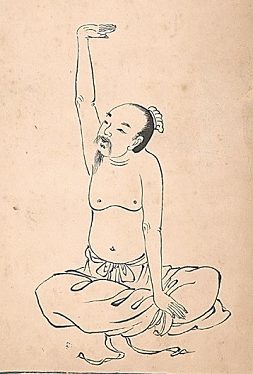 In the SKKAA, we generally follow the following rules when practicing the Baduanjin:
In the SKKAA, we generally follow the following rules when practicing the Baduanjin:
Preparation - Hugging the Tree (or Holding a Balloon)
|
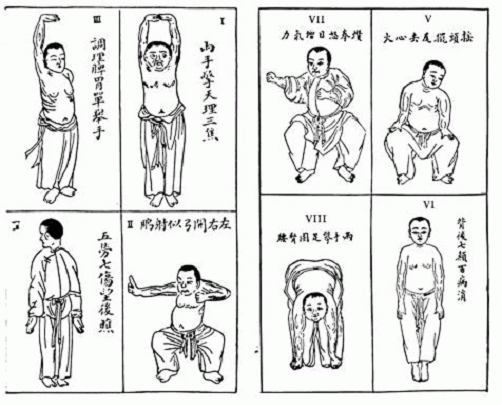


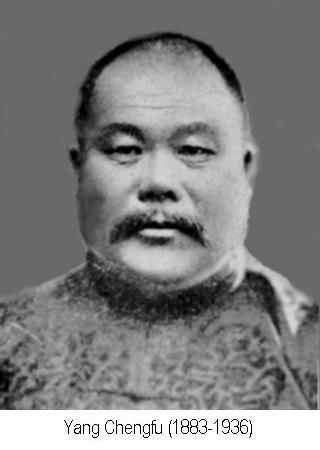 * The Yang style was created by Yang Luchan (1799-1872), a student of the Chen style's 14th generation master, Chen Changxing (1771-1853). (For more information on Yang Luchan, see Christopher M. Clarke, Samurai, Scoundrels, and Saints.) Yang Luchan struck off on his own, modifying what he had learned and passing his interpretation on to two sons, Yang Banhou (1837-1892) and Yang Jianhou (1839-1917). Yang Jianhou's son, Yang Chengfu (1883-1936), was responsible for popularizing Taiji in China, introducing the slow, "soft" form commonly recognized as Taiji and the concept that the art could be practiced for health and mental well-being without concern for its martial applications. Yang style is by far the most widespread today. (For more information on Yang Chengfu and the development of Taiji, see Christopher M. Clarke, Warriors and Wisemen.)
* The Yang style was created by Yang Luchan (1799-1872), a student of the Chen style's 14th generation master, Chen Changxing (1771-1853). (For more information on Yang Luchan, see Christopher M. Clarke, Samurai, Scoundrels, and Saints.) Yang Luchan struck off on his own, modifying what he had learned and passing his interpretation on to two sons, Yang Banhou (1837-1892) and Yang Jianhou (1839-1917). Yang Jianhou's son, Yang Chengfu (1883-1936), was responsible for popularizing Taiji in China, introducing the slow, "soft" form commonly recognized as Taiji and the concept that the art could be practiced for health and mental well-being without concern for its martial applications. Yang style is by far the most widespread today. (For more information on Yang Chengfu and the development of Taiji, see Christopher M. Clarke, Warriors and Wisemen.)
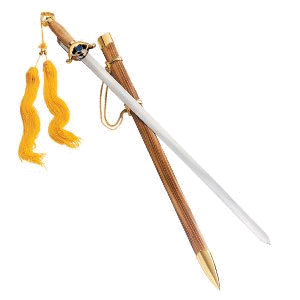
 and yang, or the harmony of opposites (hard and soft, male and female, etc.). Many people today, especially those who do not practice its martial applications, refer to the art simply as "Taiji." Taiji Quan means "Grand Ultimate Fist" or "Taiji Boxing," and suggests the incorporation of the "harmony of opposites" is the core principle of a martial art with fighting applicability. The "Grand Ultimate," or Taiji, is symbolized by the well-known "yin-yang" symbol.
and yang, or the harmony of opposites (hard and soft, male and female, etc.). Many people today, especially those who do not practice its martial applications, refer to the art simply as "Taiji." Taiji Quan means "Grand Ultimate Fist" or "Taiji Boxing," and suggests the incorporation of the "harmony of opposites" is the core principle of a martial art with fighting applicability. The "Grand Ultimate," or Taiji, is symbolized by the well-known "yin-yang" symbol.
 Stationary
Stationary 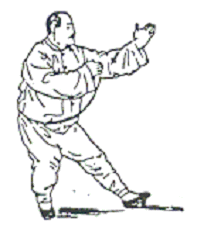 Grasp bird's tail
Grasp bird's tail
 * Mainland standard Taiji short form
* Mainland standard Taiji short form